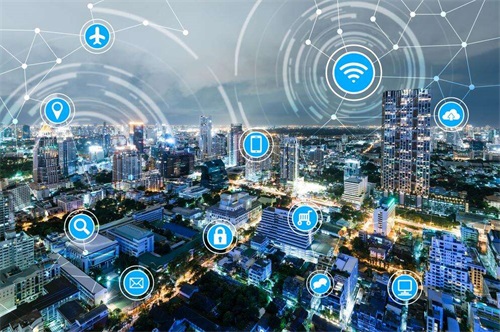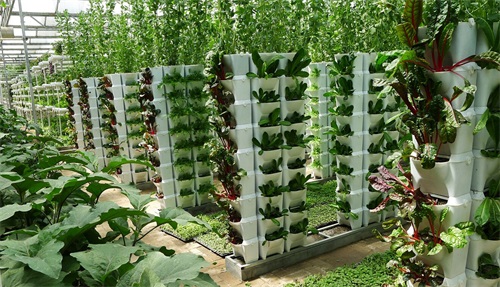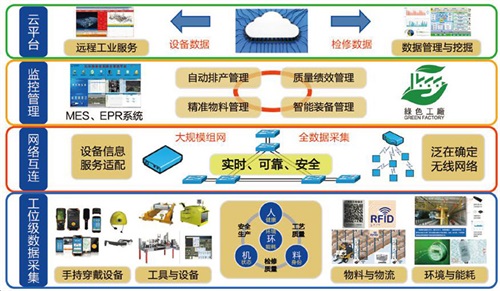Narrow Band Internet of Things (NB-IoT) has become an important branch of the Internet of Everything. NB-IoT is built on a cellular network and only consumes about 180KHz bandwidth. It can be directly deployed on GSM network, UMTS network or LTE network to reduce deployment costs and achieve smooth upgrades.
NB-IoT is an emerging technology in the IoT field that supports cellular data connections of low-power devices in wide area networks, also called low-power wide area networks (LPWAN). NB-IoT supports efficient connection of devices with long standby time and high network connection requirements, and is an important direction for the development of the Internet of Things.
1. NB-IOT applied to smart cities
In urban management, NB-IoT has obvious advantages in static resource monitoring and management applications. Typical applications include: remote meter reading, smart parking, smart street lights, smart trash cans, smart fire hydrants, and smart manhole covers. wait.


2. NB-IOT applied to environmental monitoring
Narrowband IoT environment monitoring consists of two parts: hardware monitoring part and online monitoring data transmission platform. The hardware monitoring part includes line monitoring instruments, data collectors, GPRS data collection terminals, etc., which can monitor various environmental indicators such as formaldehyde, carbon dioxide, temperature, humidity, negative oxygen ions, etc. The monitored data is transmitted to the monitoring platform to realize data reception, filtering, storage, processing, and statistical analysis. If any environmental indicator is exceeded, the platform will prompt an early warning and take corresponding measures immediately.


The narrowband Internet of Things environmental monitoring system can safely, reliable, accurately, real-time, comprehensively, quickly and efficiently display the real indoor environmental sanitation information of public places of the supervised units in front of supervisors.
3. NB-IOT applied to agriculture
When growing vegetables in a greenhouse, the temperature, humidity, CO2 amount and light level in the greenhouse need to be accurately measured to ensure high quality and high yield of vegetables. Especially for vegetables that are not suitable for production season, the requirements are even stricter. Narrowband Internet of Things (NB-IoT) is applied to greenhouse vegetable agriculture, which can accurately measure temperature, humidity, light, CO2 and other conditions in the greenhouse to control the optimal environment.


A single greenhouse can use narrowband IoT technology to form a wireless network using different sensor nodes and nodes with simple actuators (actuators with low operating currents such as fans, low-voltage motors, valves, etc.) to measure soil moisture, soil composition, and pH. value, precipitation, temperature, air humidity and air pressure, light intensity, CO2 concentration, etc. to obtain the best conditions for crop growth. Through model analysis, automatically regulate the greenhouse environment, control irrigation and fertilization operations, to obtain the best conditions for plant growth. .
In an agricultural park with greenhouses, by receiving data from wireless sensor aggregation nodes for storage, display and data management, it is possible to obtain, manage and analyze information from all base test points, and display it in intuitive charts and curves. It is displayed to users in each greenhouse, and at the same time, various sound and light alarm information and SMS alarm information are provided according to the needs of the plants to achieve intensive and networked remote management of the greenhouse.
In addition, narrowband IoT technology can be applied to different stages of greenhouse production to analyze plant performance and environmental factors at different stages and feed them back to the next round of production, thereby achieving more precise management and obtaining better quality products.
Smart agriculture narrowband Internet of Things consists of two parts:
1. Data collection: The Internet of Things system can be connected to sensors to collect soil temperature, humidity, nutrient content (N, P, K), PH value, precipitation, air temperature and humidity, air pressure, light intensity, etc., to regulate the growth of crops. planning;
2. Software platform: The agricultural Internet of Things platform is not just an operating platform, but a huge management system. It is a combination of tangible and intangible control systems used by users to implement agricultural operations. On this platform, users can give full play to their own management ideas, management concepts, and management methods, realize intelligent monitoring and automated operations of information, effectively integrate internal and external resources, and improve utilization efficiency.
4. NB-IOT applied to industry
Smart factory system is one of the typical applications in the industrial field based on Internet of Things technology. The system comprehensively integrates computer and network technology, Internet of Things technology, audio and video technology, sensor technology, virtual reality technology, mobile Internet technology, wireless communication technology, etc. , to achieve digital/3D visualization comprehensive management of the factory.


Use electronic tags for every item, equipment, unit material and person in the factory; sense the factory environment (temperature, humidity, noise, pollution); tag every work order, every link, and every step in the entire production process. Work stations, each machine, and each employee conduct organic data collection and management, and combine monitoring and security, power systems, business systems, and factory buildings with virtual reality to form a smart factory system.
Producers do not need additional methods, the system automatically collects the actual operation process, analyzes and processes each link. Save costs, improve efficiency, improve quality and increase profit margins.
Managers do not need to be on-site and can grasp factory information and on-site conditions through the system anywhere.
Customers can view their current product production status, quality, etc. remotely.
Narrowband IoT technology can be applied to data collection and transmission of distributed devices, helping the platform achieve any required data mining, information analysis and assisted decision-making.
The role of the smart factory narrowband IoT system:
Improve the timeliness and accuracy of information; optimize enterprise inventory and reduce capital occupation; improve the accuracy and control capabilities of operation plans; improve the enterprise’s work efficiency and production capacity; improve the accuracy of financial budgets; improve scientific management and the core competition of enterprises Strength; compress costs, realize the organic unification and integration of information flow, logistics, capital flow, business flow and value flow.